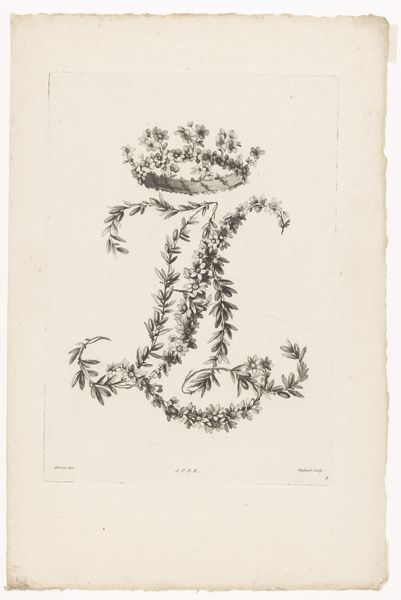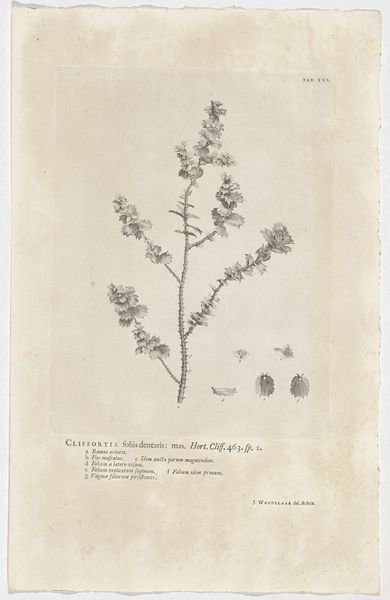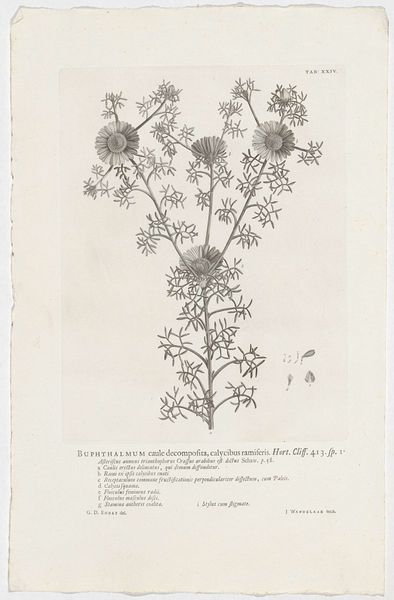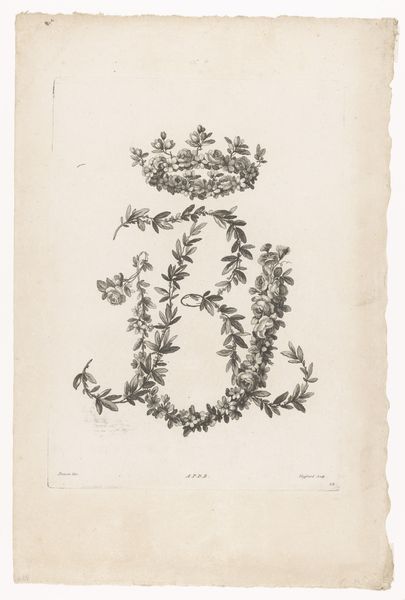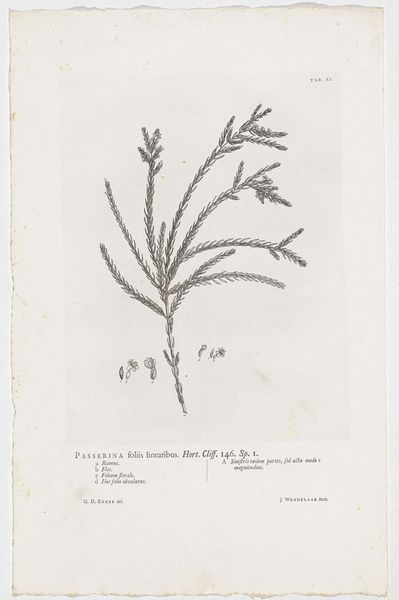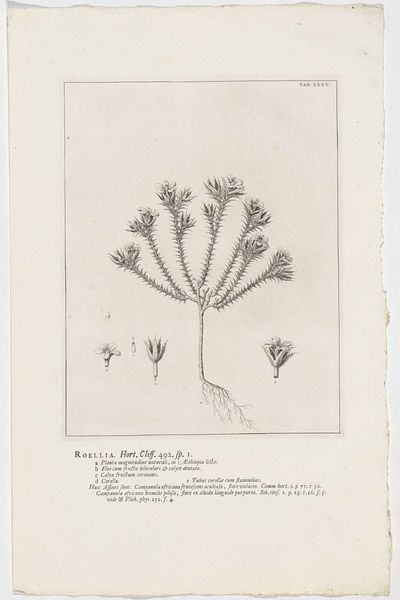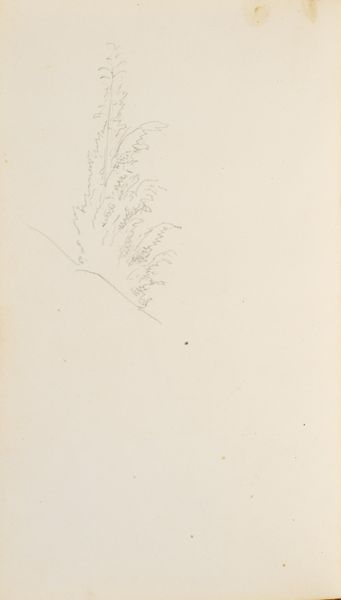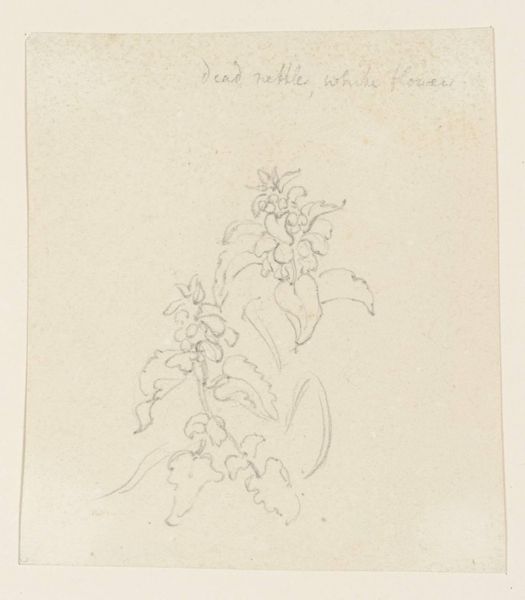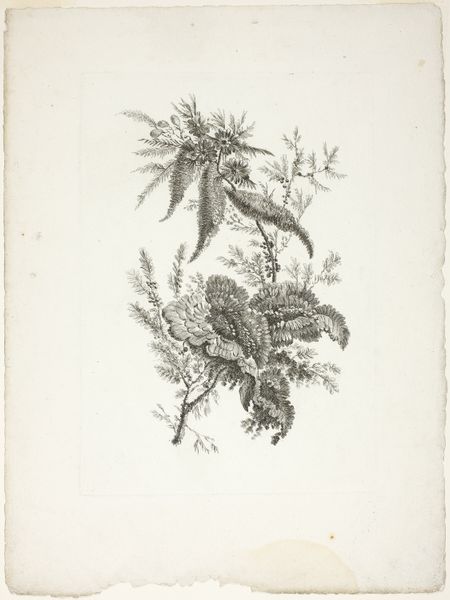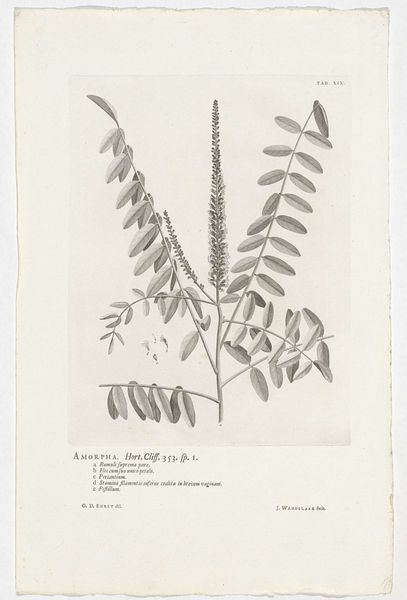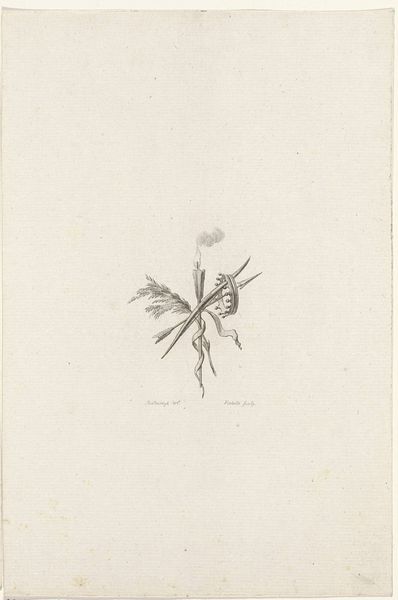
drawing, print, etching, paper, ink, engraving
#
drawing
# print
#
etching
#
old engraving style
#
paper
#
personal sketchbook
#
ink
#
plant
#
academic-art
#
engraving
Dimensions: height 290 mm, width 222 mm
Copyright: Rijks Museum: Open Domain
Editor: Here we have "Anthospermum aethiopicum," a print from 1738 by Jan Wandelaar. It depicts a detailed botanical illustration. It feels very precise and scientific, but also quite beautiful in its delicate lines. What strikes you when you look at this engraving? Curator: What I find interesting is to consider the material conditions of its production and use. Look at the fine lines, created with etching and engraving. Think of the skilled labor, the artisan's precise hand. But it wasn't just about artistry. It's also a product of specific social needs – the rise of scientific classification and colonialism. These prints allowed for the dissemination of knowledge, transforming botanical specimens into commodities. Do you see how this challenges our ideas of 'art'? Editor: Absolutely! It's easy to overlook the labour involved and just see the finished product, this beautiful image, hanging in a museum. The mass production aspect is a contrast to our idea of fine art as a unique object, isn't it? Was it typical for artists to also be the engravers or would he have commissioned someone else? Curator: Often, in cases like this, the artist was skilled in both drawing and engraving. It collapses that high art/craft divide we often impose. Wandelaar's signature proudly declares 'Sculpsit,' meaning 'he engraved it.' It elevates the engraver, celebrating not just the design but the means of production, the skilled labor. Editor: So, thinking about the process and how the art was made makes us reconsider the function of the image. Thank you. I never thought about it this way! Curator: Exactly. Examining the materiality and its journey helps us understand the piece as more than just a pretty picture, it helps us uncover complex historical relationships.
Comments
No comments
Be the first to comment and join the conversation on the ultimate creative platform.
